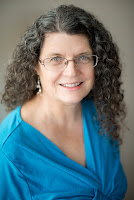 |
| Sanora Babb, Wikimedia Commons |
Reading and writing were Sanora’s favorite pastimes. She also had a heart for people. As a young girl, she made friends with the Otoe tribe and was given the name Little Cheyenne Who Rides Like the Wind. She loved her name and loved the Native American people.
When she was twelve, Sanora got her first job with a printer. She worked for him in exchange for him printing up handbills for her theater productions. I did not find more about these plays she put on but would love to know more.
 |
| Migrant camp 1936, California Creative Commons |
In the early days of the dust bowl and the Great Depression, Sanora secured a position as an assistant to Tom Collins to help set up the FSA government camps for migrant workers. Sanora met with many migrants, working alongside them in the fields and writing down their stories. As she took notes, she formed an idea for a book.
Sanora drafted her novel, Whose Names Are Unknown during her work with Tom Collins. The book told the story of the dust bowl hardships and the migrant workers plight. She completed the book and an editor at Random House, Bennett Cerf, called her work “exceptionally fine” and intended to publish the book. Then John Steinbeck’s novel, Grapes of Wrath, was released to instant acclaim and Random House refused to publish Sanora’s book, citing the depressed times wouldn’t support two such similar works.
The interesting note and a point of contention with some people is that Sanora had been taking notes about the migrant workers, their conditions, etc. and submitting reports to Tom Collins. Collins, in turn, had met John Steinbeck and knew of his work on a book about the migrants. He sent the reports on to Steinbeck to help with his book with the expectation that Steinbeck would help Collins with editing a nonfiction book he was writing.
It is known that Steinbeck spent time in California among the migrant people studying their plight and researching his book. However, some people note the similarities between Steinbeck’s and Sanora’s book and wonder if he did use her notes. There are several interesting comparisons: they both have a character based on Tom Collins, their descriptions of a stillborn baby are similar, and they both describe women birthing in tents. There are several other similarities.
 |
| Sanora with husband, James Wong Howe Wikimedia Commons |
Sanora continued to try other publishers after the Random House rejection but no one would take her book after Steinbeck’s success. She stopped writing for several years until she met other writers and also met cinematographer, James Wong Howe, who became her husband.
In 1958, Sanora published a book, The Lost Traveler, and went on to publish other books. She wrote, An Owl on Every Post, a memoir about her time in Eastern Colorado. In 2004, her book, Whose Names Are Unknown, was finally published. She died in 2005 at the age of ninety-eight.
Sanora’s book, Whose Names Are Unknown, was featured in the Ken Burns documentary on the dust bowl. She is the author of seven books and numerous short stories, essays, and poems published in literary magazines.
Have you ever heard of Sanora Babb or read one of her books? Have you heard of the controversy with Steinbeck’s work. I would love to hear from you.
Nancy J Farrier is an award-winning, best-selling author who lives in Southern Arizona in the Sonoran Desert. She loves the Southwest with its interesting historical past. When Nancy isn’t writing, she loves to read, do needlecraft, play with her cats and dog, and spend time with her family. You can read more about Nancy and her books on her website: nancyjfarrier.com.




Thank you for posting. I have never heard of Sanora Babb, nor the controversy regarding Steinbeck's book. I'm glad to read that her book was finally published.
ReplyDeleteThank you, Connie. I'm glad she was able to see her book published too.
DeleteI have never heard of her. But I found this post fascinating. I loved that her book finally got printed and she lived to see it. Thanks for sharing her story.
ReplyDeleteThank you. Her story fascinated me too.
DeleteOh my, I am an Oklahoma history buff and was shocked at this story. I've never heard of Sanora but her dust bowl book is on order!
ReplyDeleteTonya, I am hoping to read her books. They sound very good.
Delete